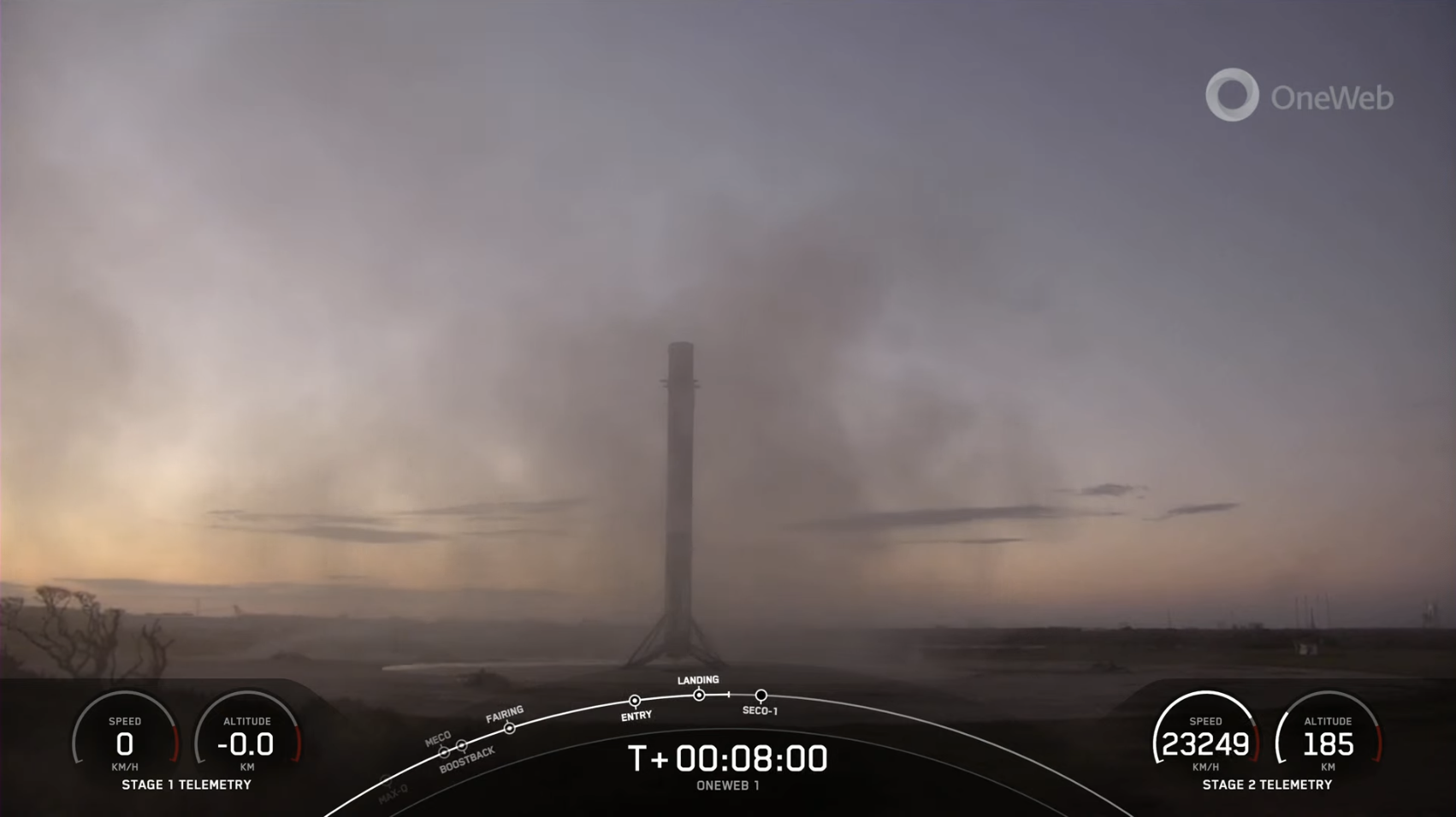
A week, it is said, is a long time in politics. And so too are a pair of launchless weeks in SpaceX operations, after two missions were temporarily grounded on the East and West Coasts late last month, before a 230-foot-tall (70-meter) Falcon 9 booster successfully lofted 40 OneWeb broadband internet satellites into near-polar orbit on Thursday evening.
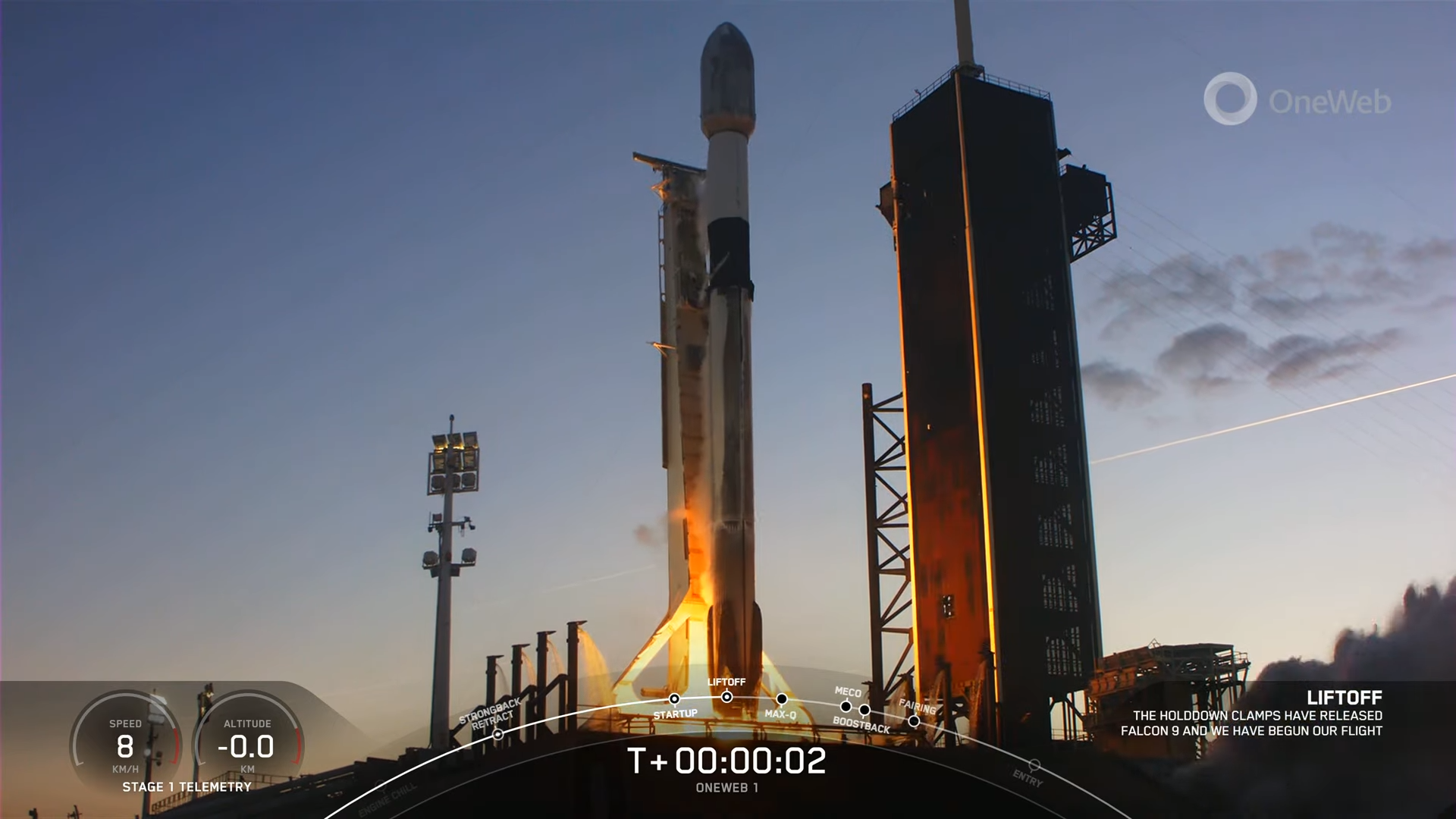
Liftoff of the four-times-used B1069 core—whose spacefaring career nearly came to a premature end on her very first outing last December—occurred from historic Pad 39A at Florida’s Kennedy Space Center (KSC) at 5:27 p.m. EST Thursday, as SpaceX heads into the final month of a personal-best-beating 2022. Tonight’s flight terminated with B1069’s first touchdown on solid ground, alighting on Landing Zone (LZ)-1 at Cape Canaveral about eight minutes after launch.
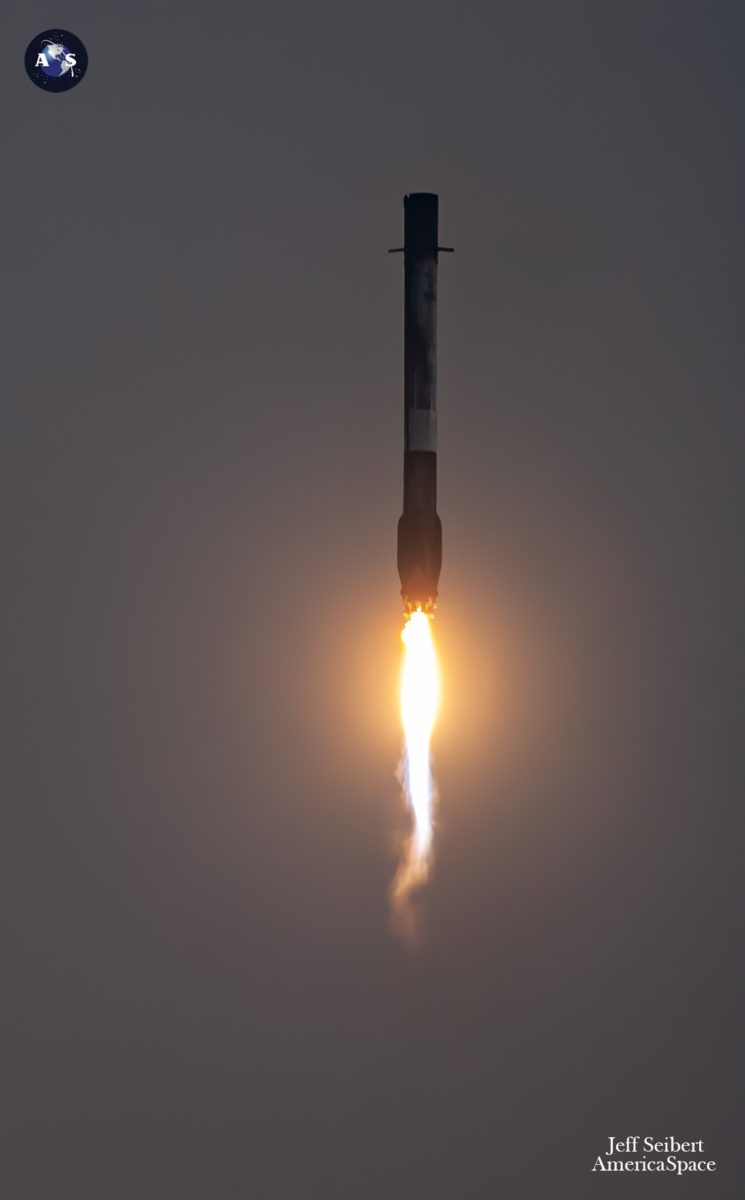
According to London, England-based OneWeb, Thursday’s launch marked the 15th flight of these high-speed, low-latency broadband microsatellites, each of which weighs around 275 pounds (125 kilograms) and are designed to reside at an orbital altitude of 750 miles (1,200 kilometers), inclined 86 degrees to the equator. The first 13 launches between February 2019 and February 2022 saw 428 satellites—about 66 percent of OneWeb’s 648-satellite first-generation network—placed into orbit using Russian Soyuz boosters out of the Guiana Space Center in Kourou, French Guiana, the Baikonur Cosmodrome in Kazakhstan and the Vostochny Cosmodrome in the Russian Far East.
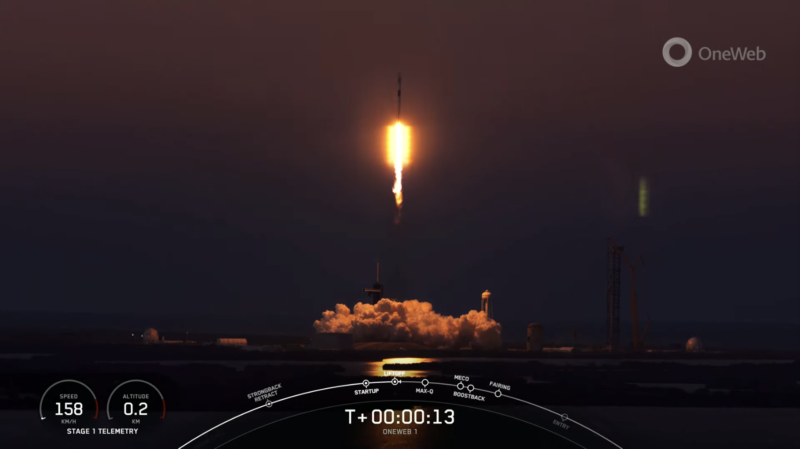
But following President Vladimir Putin’s invasion of Ukraine last spring, and the resultant raft of Western economic sanctions imposed on Russia, OneWeb suspended six further launches out of Baikonur and sourced alternate launch providers. In March, the company contracted with SpaceX, then added New Space India Ltd., the commercial arm of the Indian Space Research Organisation (ISRO), to its launcher portfolio in April.
Thirty-six more OneWebs roared aloft atop an Indian Geosynchronous Satellite Launch Vehicle (GSLV) III booster from the Satish Dhawan Space Centre in Sriharikota, Andhra Pradesh, in October, raising the total number of satellites placed into orbit to 462. Another GSLV III launch out of Sriharikota and three SpaceX Falcon 9 launches from KSC are due to complete OneWeb’s 648-strong first-generation network by next spring.
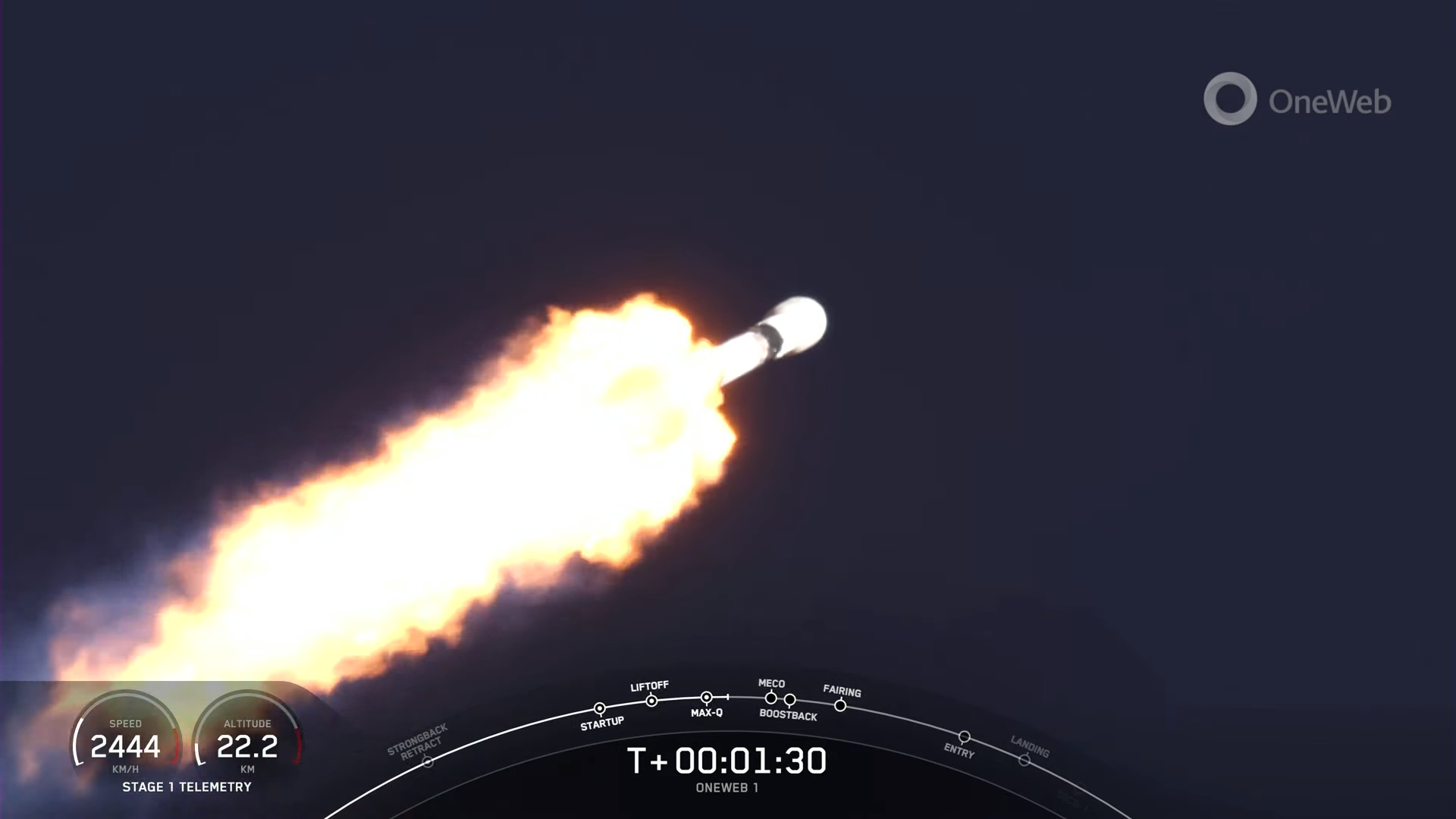
Last week, the 40 OneWeb satellites—totaling almost 13,000 pounds (5,900 kilograms)—for this inaugural Falcon 9 launch were encapsulated in their payload fairing at the Cape. Weather conditions for both Thursday’s opening launch attempt and a backup try on Friday were predicted to be around 90-percent-favorable, according to the 45th Weather Squadron at Patrick Space Force Base.
“The stretch of favorable launch conditions will last through the end of the week as ridging aloft and associated high pressure at the surface remain in control of our weather pattern,” noted the 45th in its Wednesday morning update. “A very weak boundary will approach the area tomorrow, but the strong high pressure will help stave it off and prevent any unsettled weather.
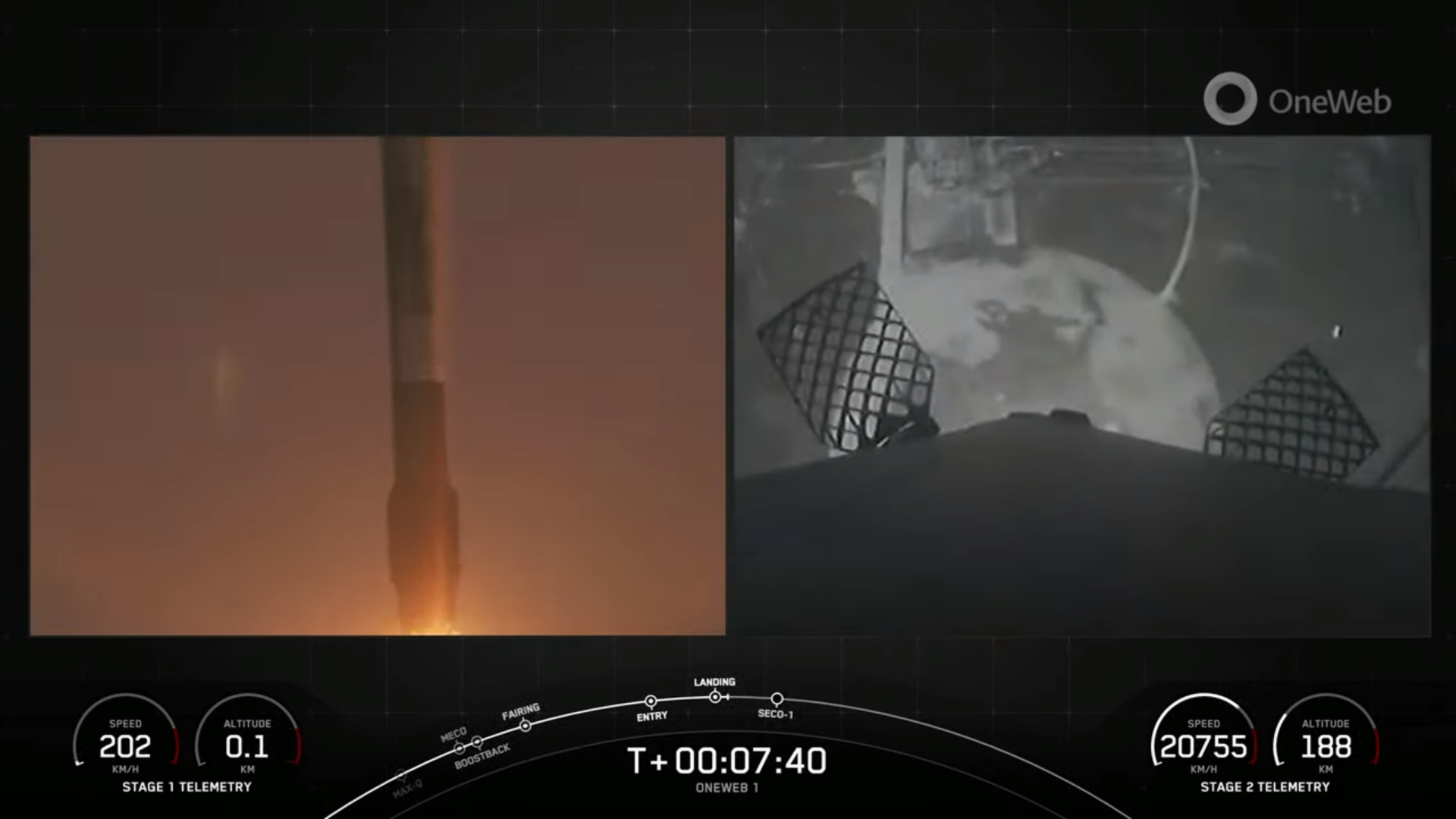
“While there will likely be a few showers off the coast tomorrow afternoon, they are expected to be low-topped and remain offshore,” the forecast added. “Winds will be fairly light from the north and dry air aloft will cap off vertical cloud development.”
All told, this was expected to produce a highly favorable picture for both the primary and backup launch attempts. In fact, the chance of an on-time launch was tempered only by the slight risk of violating the Cumulus Cloud Rule.
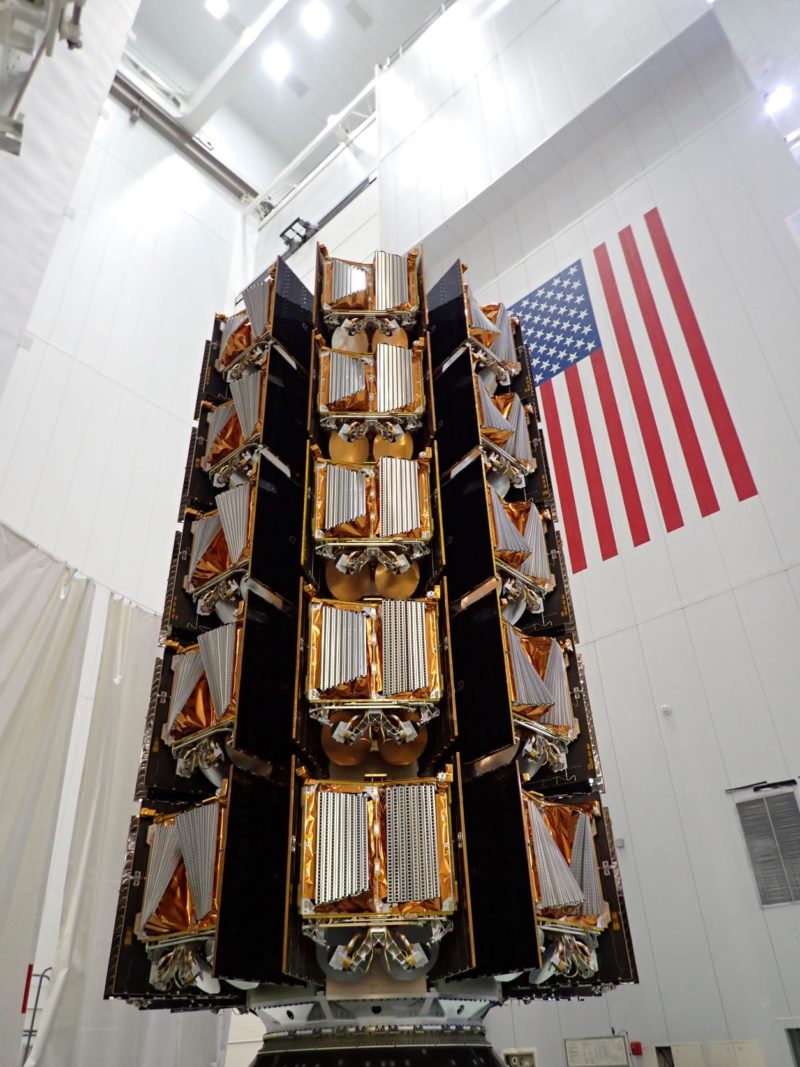
B1069, the four-times-flown booster earmarked for Thursday’s launch, almost saw the beginning and end of her career on her very first mission last December. She entered SpaceX’s storied Falcon 9 fleet a few days before Christmas 2021 to deliver the CRS-24 Cargo Dragon and 6,500 pounds (2,590 kilograms) of equipment, payloads and supplies to the Expedition 66 crew on board the International Space Station (ISS).
Minutes after boosting CRS-24 uphill, B1069 returned towards a seemingly routine touchdown on the deck of the Autonomous Spaceport Drone Ship (ASDS), “Just Read the Instructions”, situated offshore in the Atlantic. But her first landing attempt almost proved to be her last.
According to Derek Wise in commentary and imagery on Space Explored, B1069 touched down “hard” and far from center, right at one of the drone ship’s corners. She knocked down an I-beam perimeter rail and caused significant denting to JRTI’s robotic “Octagrabber” and her entire suite of nine Merlin 1D+ first-stage engines.
When the hapless booster returned to Port Canaveral a few days later, she exhibited a worrisome sideways tilt. After this narrow brush with death, B1069 was out of service for the first half of 2022 as she underwent repairs and modifications.
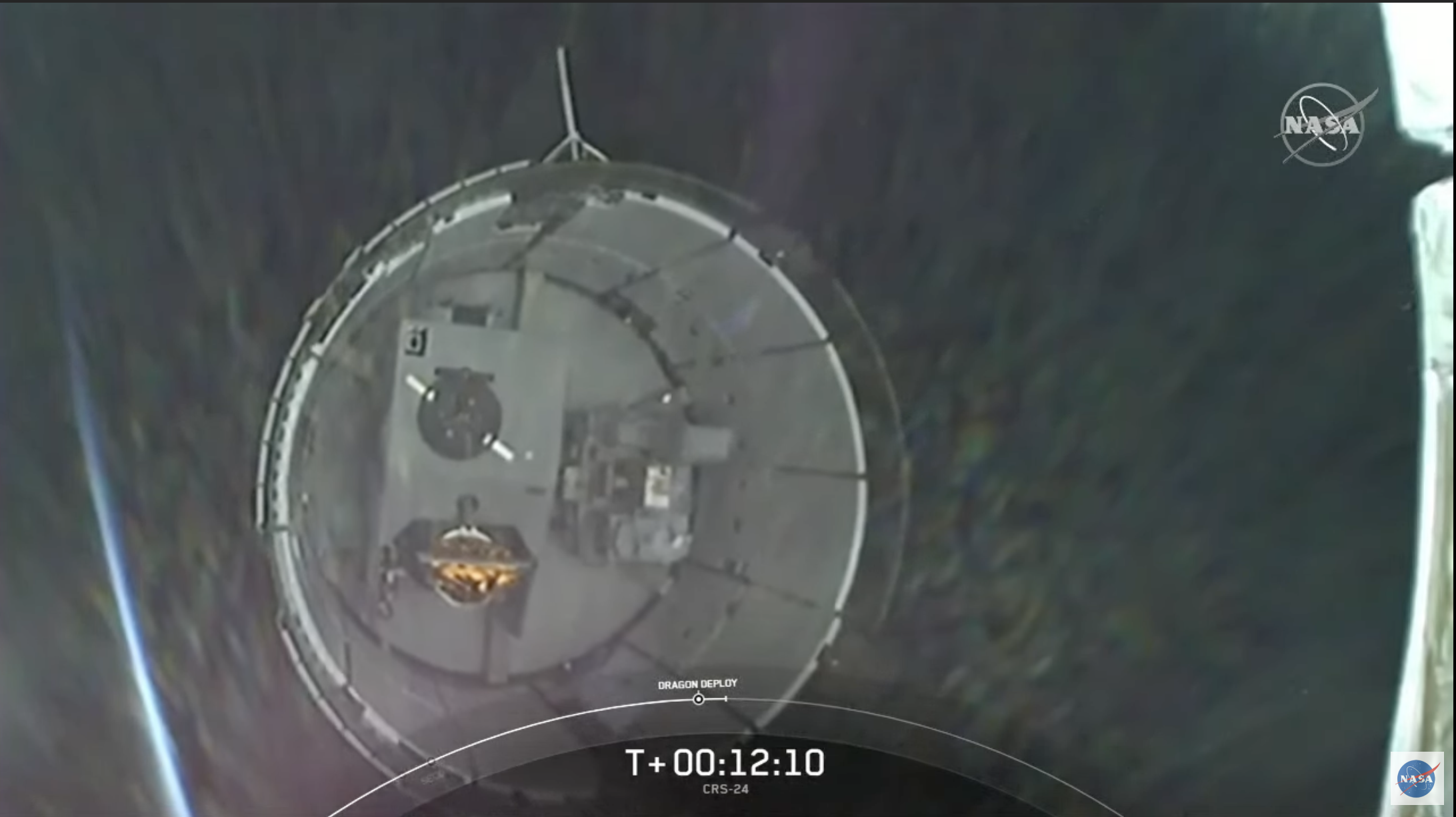
Outfitted with a sparkling new suite of Merlins, four new landing legs and a brand-new second stage, the revived booster returned to service in late August, lofting 54 Starlink internet communications satellites—totaling 36,800 pounds (16,700 kilograms)—into low-Earth orbit. And a third flight in mid-October saw her deliver Eutelsat’s heavyweight Hotbird 13F geostationary communications satellite to orbit.
All three prior missions saw B1069 return to alight on a drone ship, but for the first time in her career on tonight’s flight she returned to land on solid ground at the Cape’s LZ-1. It marked the eighth occasion this year that a SpaceX mission has returned from the edge of space to land on terra firma.
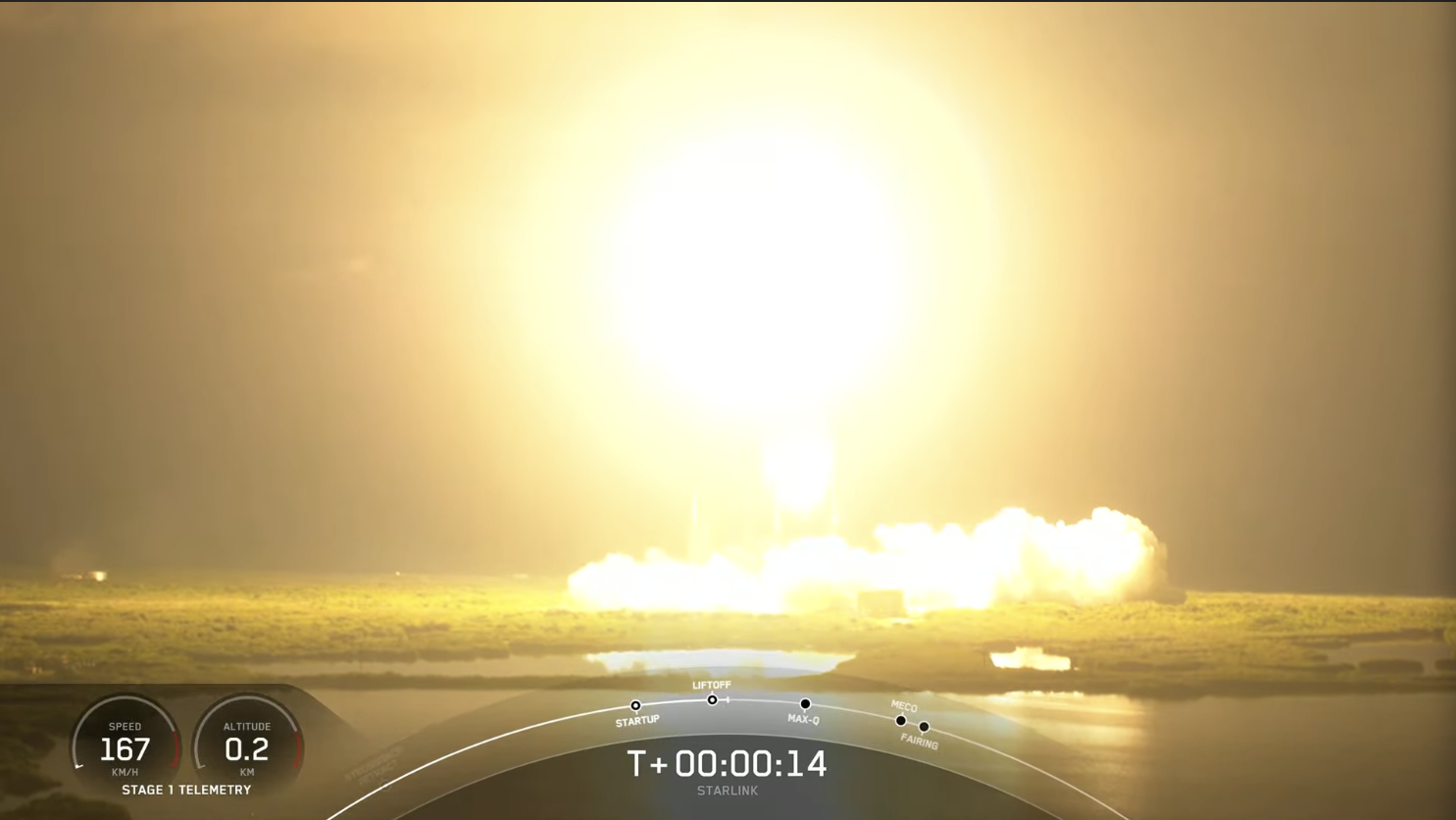
Liftoff occurred on time at 5:27 p.m. EST and B1069 powered smoothly uphill, her nine Merlin 1D+ engines pushing the stack airborne with a thrust of 1.5 million pounds (680,000 kilograms). B1069 provided the means and the muscle for the first couple of minutes, before shutting down and separating, to commence a picture-perfect descent to LZ-1.
Meanwhile, the Merlin 1D+ Vacuum engine of the Falcon 9’s second stage then picked up the baton with a standard, six-minute “burn”, followed by a lengthy period of “coasting”, ahead of the deployment of the OneWeb stack. Over a 31-minute period starting at just past 58 minutes into tonight’s mission, the satellites were released from their dispenser in batches: 14 in the first batch, 13 in the second and 13 in the third.
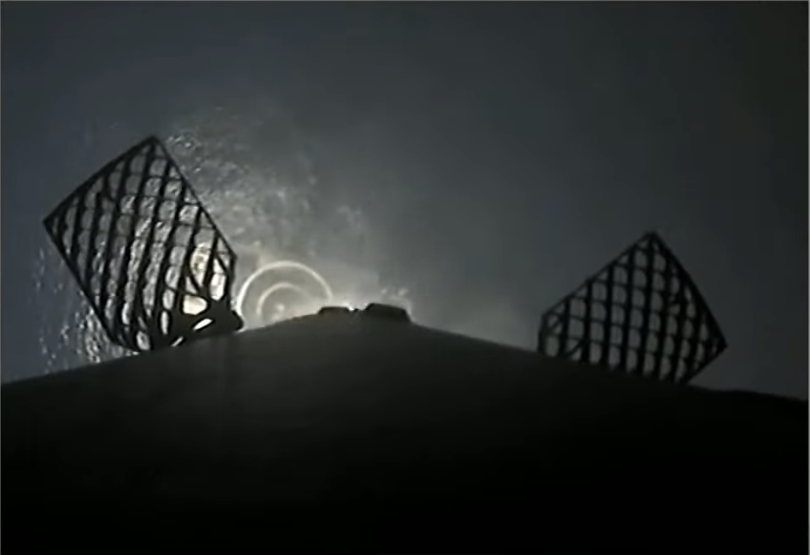
It has been an unusually quiet start to December, with the long-awaited Falcon 9 launch of Japan’s Hakuto-R lunar lander, the United Arab Emirates’ (UAE) Rashid rover and NASA’s water-ice-seeking Lunar Flashlight knocked off its original 30 November slot. SpaceX noted its intent to stand the mission down “to allow for additional pre-flight checkouts”, initially indicating a 24-hour slip to 1 December, before a longer delay became necessary.
Finally, on Wednesday, it announced that “teams completed additional vehicle inspections and reviews” and set a new T-0 for no sooner than 2:38 a.m. EST on Sunday, 11 December from storied Space Launch Complex (SLC)-40 at Cape Canaveral Space Force Station, Fla. Attention will then turn to Vandenberg Space Force Base, Calif., where at 3:46 a.m. PST on 15 December another Falcon 9 will deliver the NASA-led Surface Water Ocean Topography (SWOT) payload into an orbit of 530 miles (860 kilometers), inclined 77.6 degrees to the equator, for a three-year-plus investigation of the changeability characteristics of surface water bodies over time.





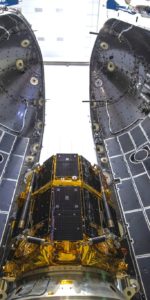
14 Comments
14 Pings & Trackbacks
Pingback:SpaceX Lofts Moon Lander, Rover, Ice-Seeker, Approaches 60-Launch Year - AmericaSpace
Pingback:SpaceX Wraps Up Banner 2022, With Year-End Launch of Israeli Spy Satellite - Space News
Pingback:SpaceX déploie la armoiries 2022, derrière le mappemonde du complice fureteur sabra d’ici la fin de l’période – spyxfamily-es
Pingback:SpaceX’s First 2023 Mission Includes 114-Strong Payload Haul - Space News
Pingback:SpaceX’s First 2023 Mission Includes 114-Strong Payload Haul - AmericaSpace
Pingback:Record-Tying Falcon 9 Kicks Off 2023, Others Wait in Wings - AmericaSpace
Pingback:Record-Tying Falcon 9 Kicks Off 2023, Others Wait in Wings - Space News
Pingback:SpaceX Launches 40 OneWebs, Readies Vandenberg Booster for Starlink Mission - AmericaSpace
Pingback:Launch-Heavy February Dawns With 200th Falcon 9 Mission Success - AmericaSpace
Pingback:As SpaceX Lofts 40 OneWeb Satellites, Relativity Space Aims for Launch Attempt #2 on Saturday - AmericaSpace
Pingback:SpaceX Sets New Launch-to-Launch Record, Lofts SES-18/SES-19 Twins - AmericaSpace
Pingback:Weather Looks Fine for Pre-Dawn Falcon 9 Launch Tomorrow - AmericaSpace
Pingback:SpaceX Flies Third Starlink Mission of May, Attention Turns to Next Week’s Ax-2 Launch - AmericaSpace
Pingback:SpaceX Launches 2023’s Tenth Vandenberg Mission, Ax-2 Completes Static Fire - AmericaSpace